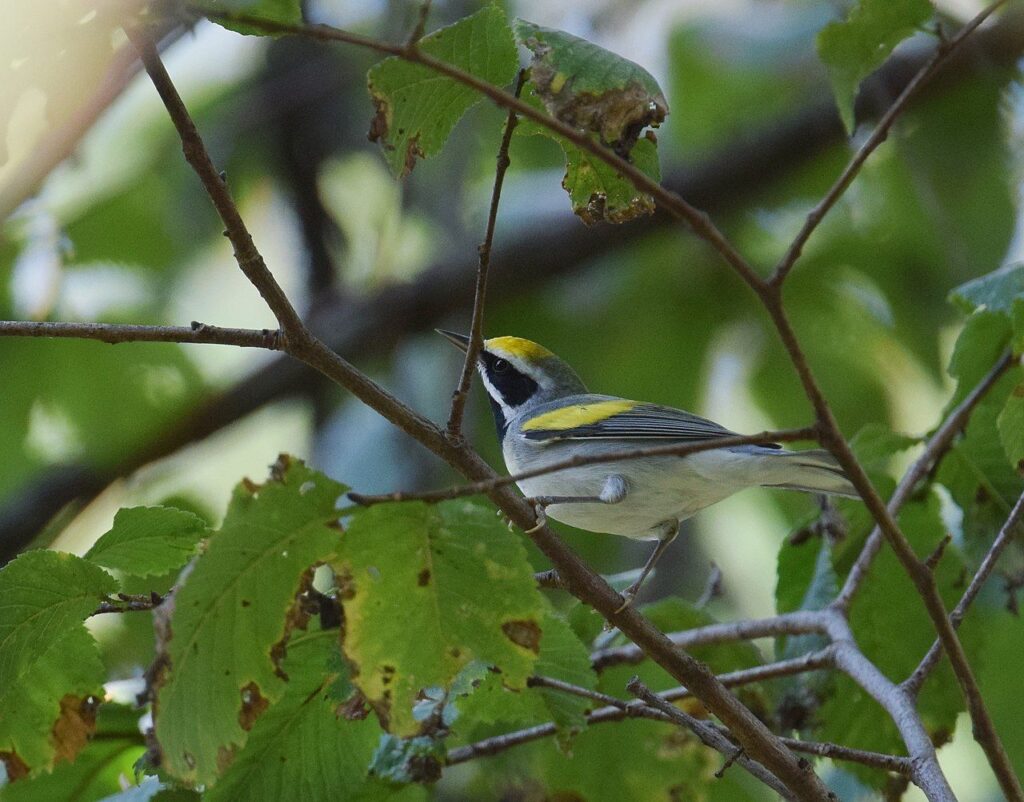
9 January 2023
Golden-winged warblers (Vermivora chrysoptera) and blue-winged warblers (Vermivora cyanoptera) do not look or sound alike but they are well known to hybridize. Because of this ornithologists used to worried that the more numerous blue-winged warbler would force the golden-winged out of existence. Then a 2016 genetic study showed no need to worry — they are very closely related. Now a 2022 study shows that hybridization will become less likely thanks to climate change.
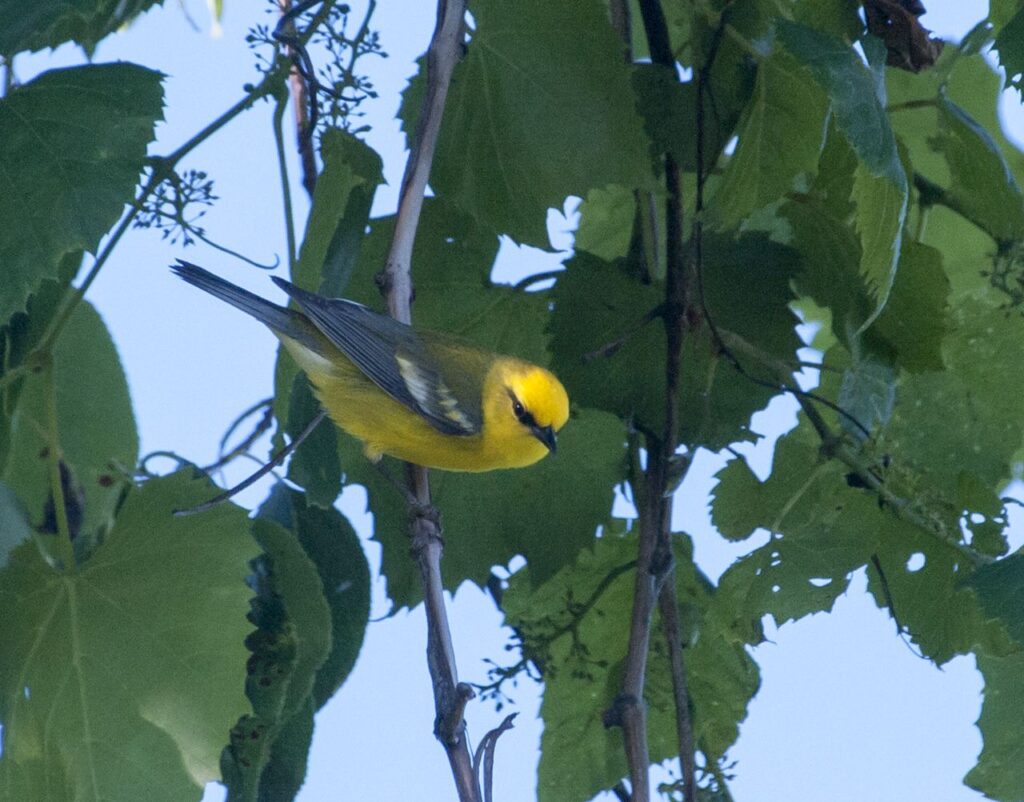
In 2016 we learned that golden-winged and blue-winged warblers are virtually the same bird — 99.97% genetically alike! No wonder they interbreed.
Put another way, the striking visual differences between Golden- and Blue-winged warblers could be considered akin to the differences between humans with and without freckles. Golden-wings and blue-wings have even less genetic differentiation than two subspecies of the Swainson’s Thrush.
— All About Birds: Mixed Wing Warblers: Golden-wings and Blue-wings are 99.97 percent alike genetically
Their colors and songs fooled us so we called them hybrids and even named them Brewster’s and Lawrence’s warblers, but the difference is moot to the birds themselves. This illustration embedded from All About Birds, shows their four color phases governed by a dominant/recessive throat-color gene.
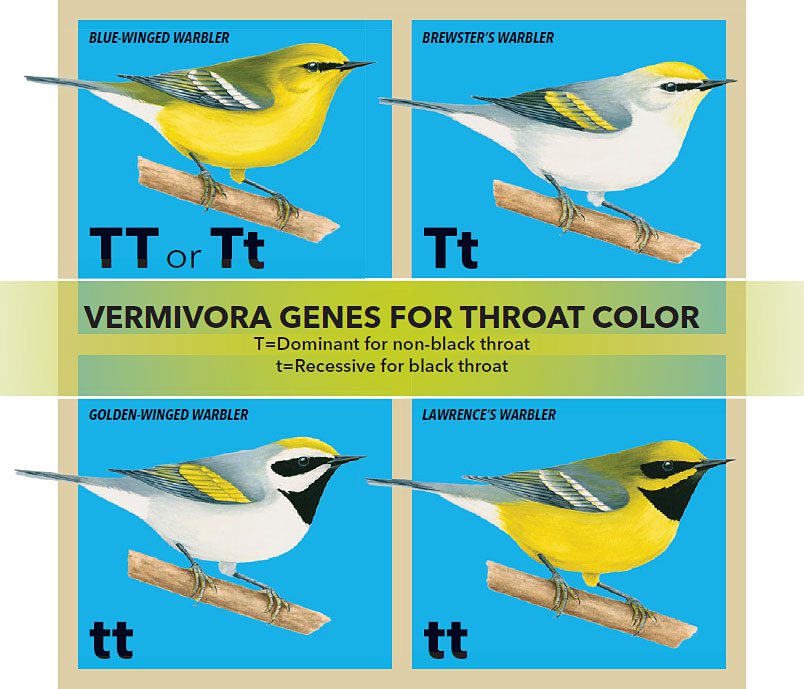
If you’re still worried about hybrids, the newest study should put your mind at ease. Entitled “Change in climatically suitable breeding distributions reduces hybridization potential between Vermivora warblers,” it maps the birds’ past and present breeding ranges and models their future under 6 climate scenarios.
Historically (1932-1997) the warblers’ ranges overlapped a lot but by 2012-2021 it was evident they were moving apart. Climate change has moved the golden-wing’s preferred cooler habitat to the north and higher elevations.
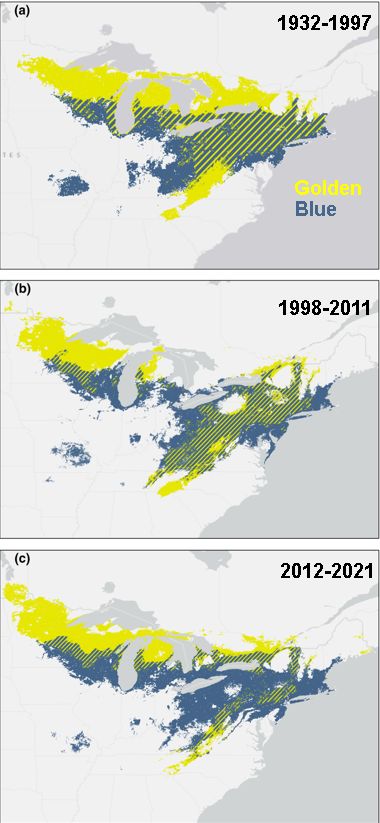
The future will move their ranges even more, shown in six scenarios below. The left column shows climate altering emissions peaking in 2040 and then declining. The right column shows emissions continuing to rise through 2100.
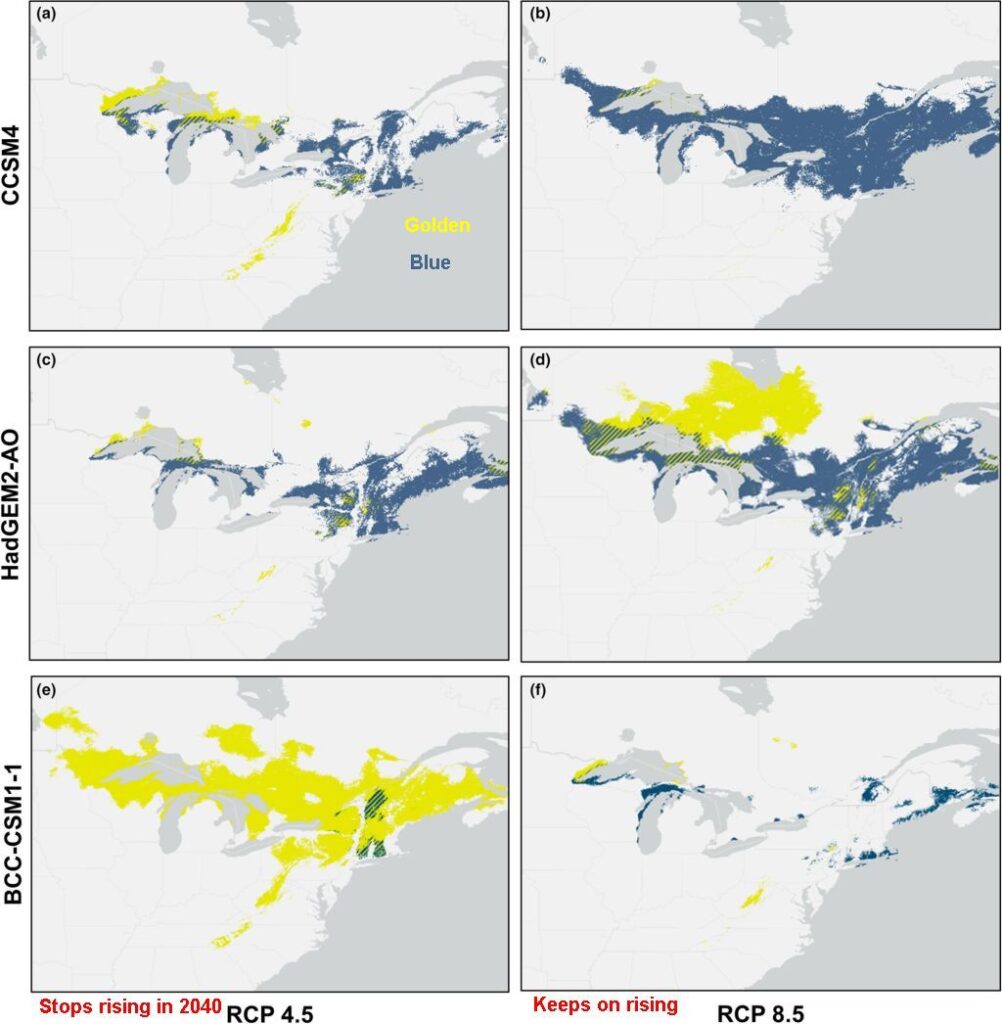
Unfortunately climate change may force one or both warblers out of existence. Map (d) is the only happy one for both of them but they will disappear as breeding birds in western Pennsylvania.
Don’t worry about golden-winged warbler hybrids. The real problem is climate change.
* Read more about golden-wing and blue-wing relatedness in All About Birds, Living Bird Magazine: Golden-Winged And Blue-Winged Warblers Are 99.97 Percent Alike Genetically.
* See the breeding range study at Wiley Online: Change in climatically suitable breeding distributions reduces hybridization potential between Vermivora warblers.
(photos from Wikimedia Commons, illustration embedded from All About Birds, maps are open access at Wiley Online Library)